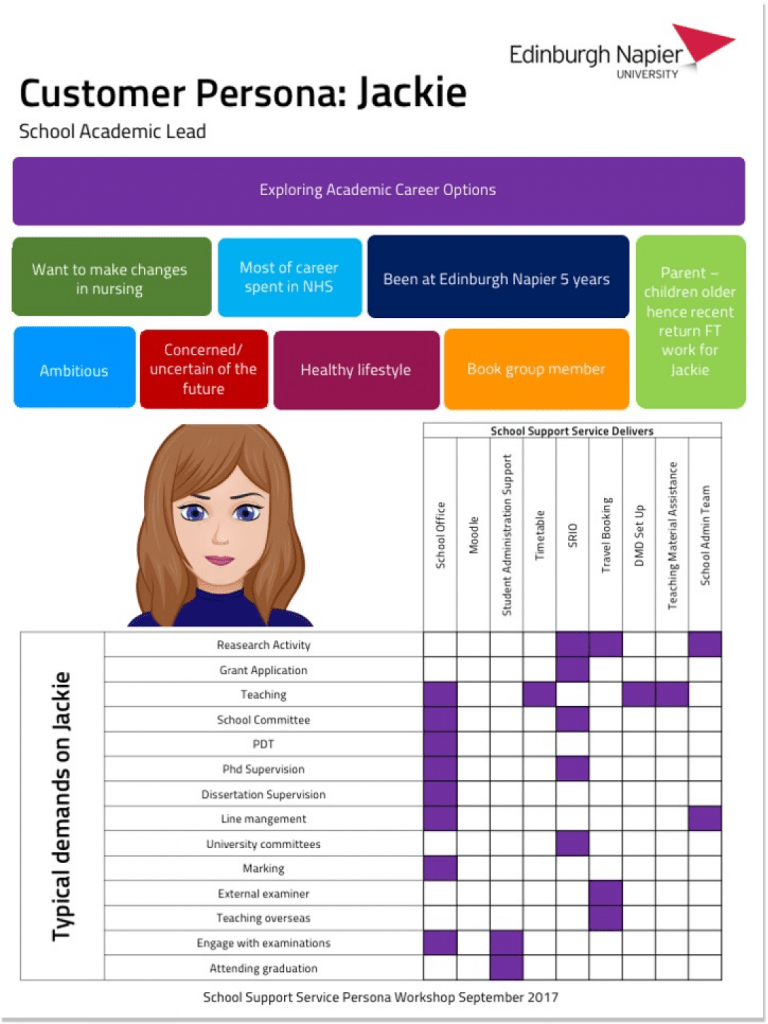Customer Service in Higher Education: Why is It Important and How to Improve It
Customer service in higher education deserves to be scrutinized. That's the topic we brought up in this interview article. Check out educational experts' and counselors' insights right here.
Written by Olesia Melnichenko

When I was a university student, I somehow managed to dig up all the information by myself. There was no one to guide me through dozens of processes, show how tasks should be done, or tell me where I can grab the uncome-at-able book issue for my term paper. No one to provide me with professional support, so to speak.
Come to think of it, customer service hasn’t always been perceived through the lens of educational institutions. Small wonder, when someone tells you this term, you’d think “Oh, right, business and stuff like that”. However, the situation’s changing as we speak.
Now, students are the new customers. They do have specific needs and demands to cater to while they study. Today’s agenda is customer service in higher education and all the twists and turns you should know about it.
What is customer service in higher education?
The algorithm of customer service in schools is pretty much obvious: a client reaches out to a support representative with an issue and the whole troubleshooting process begins. Academic customer service stands for optimization of the interaction between a student and a higher educational establishment.
What are the main principles of good customer service? That’s right, a proactive approach and efficient communication. Research conducted in the UK showed that “effective communication may reduce the number of students who drop-out in their first year” usually because “students come with mistaken expectations that might have been corrected through more effective communications“. This isn’t just true for freshmen – all students can benefit from being proactively served by their institutions.
In the educational sector, you challenge young people and invest in their career goals while trying to raise independent professionals. Teachers’ qualifications may be much higher than this of corporate customer support reps. However, both university faculty and service reps have a common purpose, which is to make customers happy!
Customer service in higher ed: experts talk
As Micah Solomon claims, “you’re not simply trying to “serve customers.” You’re trying to build your students into responsible scholars and citizens“. This is the main difference between a conventional business environment and customer service in higher education.
This article is interview-based. Educational experts and counselors from different academic institutions shared their insights regarding customer service in higher ed and the ways to refine it. Find the Q&A just below.
How do customer service and higher education go hand in hand?
Stasia Avetysian, Brand Manager in SE Ranking, PhD, teaching history of culture in National University of “Kyiv-Mohyla Academy”
Customer service in universities is highly needed both during acquisition (communication with applicants and their parents) and studies. There is a lack of consultants – guides if you will – who could put students into the picture BEFORE entering a higher educational establishment. I mean, telling them what competencies, skills they will obtain along the way, what perks they’re about to get in the labour market, if there’s career growth available, and whether they need additional education.
There are Writing Centers in the USA and Canada that help students actually write academic papers. For instance, when you get an essay task and don’t quite understand its required structure, stylistics, or format, you can reach out to Writing Center consultants. This is a vivid example of facilitation between a university (“estimator”) and a student (“effecter”). This way, a partnership is achieved.
Kurt Bodenstedt, co-founder and COO at PDAFL LLC:
The role of customer service in higher education would be divided into administration customer service and the educator and/or student customer service models. The administration customer service would primarily focus on product reliability to merge with existing systems, aid in connecting the most users to the product that they are paying for to help shape current goals of the institution’s educational forecast.
Helping the individual user, whether they are an educator or student, would rely on obtaining and implementing national-level guidelines for knowledge on a topic as a baseline for coursework. From there the customer service would be able to aid in the implementation of lesson plans developed from feedback of the base model of product lines once it meets the requisite standards.
This whole student-customer paradigm includes so many new ideas. Mainly, these are higher education as a competitive market, public reputation as a priority in attracting and retaining students, or curriculum created with a clear professional development orientation. So, customer service for higher education is definitely here to stay.
What qualifications should customer service agents have?
Phil Ollenberg, Assistant Registrar at Bow Valley College (Calgary, Canada):
Hire staff for customer service and people skills – everything else is teachable. I’ve screened and interviewed hundreds of job applicants, and oversee dozens of student-facing positions. The best folks I’ve hired for student-facing jobs come from retail and customer service, and love interacting with people.
A key role of every student-facing worker is to educate and empower our clients to navigate our policies and help them feel welcome, included, and at home. Everyone plays a role in student recruitment and student retention.
Well, I can’t agree more. And I would add for myself that customer service reps who work closely with students should have a so-called “teacher’s skillset“. I mean they’re to guide those young people through their studies. So, make sure your support team is confident, has excellent organizational skills, can deal with conflict, and motivates students to do their best.
What influence do diversity and inclusion have on customer service in higher education?
Grant Aldrich, Founder and CEO at Online Degree:
Colleges and universities need to understand the unique needs of different types of students. Some of those student segments include international students, disabled students, or first-generation students. First-gen students might need more assistance with financial aid and career planning. International students might need more help finding housing, and disabled students might need more emotional support and practical assistance.
Colleges can start by catering sections of the website to students with different needs. They can also add helpful content on the blog, such as “How to transition from college to work-life as a first-generation student.” Colleges can also create different assistance programs like a tutoring group for first-generation students or an emotional support group for disabled students. The key is putting the resources out there and seeing what works best for students.
Will Peach, Medical educational influencer, doctor-in-training, Will Peach MD:
In Eastern Europe (where I study/work as an international medical student), things are slowly beginning to improve but there’s still a lot that needs to be done. Foreign students socialize inside of their own bubbles, and there’s very much an “us vs them” mentality at my school. Little is done in the way of “social cohesion” except for a few student-led organizations and initiatives.
As international students, we tend to feel a bit of an afterthought in terms of welfare and representation. It’s clear we’re very much an economic boon to the school and that they can afford to adopt something of a monopolistic attitude given the subject they teach, but centralized attempts to take care of these problems (through country-level representation etc.) haven’t done much to improve the situation either.
Diversification might well be in place but a “cohesive one-school sentiment” (at least across resident and international students), certainly isn’t!
I couldn’t but agree with the thoughts shared. Diversity and inclusion aren’t just buzzwords right now. These are social burning topics that should not only be talked about but also implemented in a customer service environment. Everything from learning a few welcome phrases in foreign languages to greet new customers in live chat to creating a culturally diverse support team will do.
Is there a place for personalization and digital experience?
Amrit Ahluwalia, Director of Strategic Insights at Modern Campus:
Today’s student is an experienced consumer with high expectations for personalization and an engaging digital experience. Whether your learner is a 17-year-old considering their college options, a single parent looking to finish their degree, or a middle-aged professional looking for a certificate to upskill or reskill, their expectations have been set by the eCommerce giants they interact with every day.
It’s essential for colleges and universities to find ways to leverage their digital assets — chiefly their website — to deliver a personalized and tailored experience to every individual coming through their doors. The advantage here is that by ensuring website information is both accurate and easy-to-find, colleges can free up staff time to deliver more engaging in-person support to learners who need additional help, advising, or guidance.
Perfectly put! And to provide personalization along with digital experience, you should consider a well-thought-out resource hub on your school’s website. Structure tutoring materials and include explanatory articles to give students 24/7 access to questions like “How do I change my account password?” or “When does fall semester registration start?” It can look like this:

Stasia Avetysian, Brand Manager in SE Ranking, PhD, teaching history of culture in National University of “Kyiv-Mohyla Academy”
A knowledge base is lifesaving in this context. It eases and streamlines the work of “facilitators”. A library with instructions, tutorials, and explanatory materials can help you save teacher’s, consultants’, and secretaries’ time. Plus, you can set up a live chat where desk secretaries answer all the technical and administrative issues.
What customer service tools is it necessary to adopt?
Jessica Tan, Senior Executive in Higher Education Sector in Singapore:
Excellent customer service in higher education is essential to ensuring student success. We have conducted many surveys and focus groups among our students, and the feedback we received is that students expect their queries or questions to be addressed in an efficient and convenient manner.
The students also expect to be handled by one or two persons rather than the School referring them to a different department and eventually will waste their time. Therefore, a structured customer service system and integration are very important to improve student satisfaction rates.
I agree with Jessica here as having a well-oiled system could help you handle student’s requests much faster. Students (and their parents) expect their questions and issues to be addressed in a convenient and efficient manner.
If I were to choose a best customer support software to improve my college customer service, I’d definitely keep different options open. First, I would add live chat to my website. Why? For several reasons:
- Easy installation
- Instant help for customers
- Minimum wait times
- Ability to be proactive

Besides, I’d think of how it’s possible to encourage customer do-it-yourself service. For that, I would consider a thought-through knowledge base because of its benefits:
- Easy installation
- A rich WYSIWYG editor
- SEO friendliness
- Unified knowledge repository
- Chat widget integration
Sure thing, I wouldn’t forget my team that needs to handle all these countless customers’ requests. That’s why a complex help desk system won’t go amiss. Its perks are clear-cut:
- Detailed customer profiles
- Shared inbox
- Canned responses
- Convenient conversation tagging, assigning, and merging
- Live reports and analytics
What is “customer persona” in higher education?
Nina Jensen, Community Outreach Manager at 8×8:
Just like with businesses, colleges and universities are home to a variety of different students that have different needs. The customer of higher education is the student, so create a culture around quality service.
By mapping out the different student personas at your institution, you can start to take a look at how you can support their needs and strategize how you will meet those needs. Taking care of students as customers should lead to increased retention, which is an increasingly important revenue source for higher education institutions.
The same holds for a customer (or buyer) persona in a business environment. The better you get to know your client and unscramble their pain points and demands, the easier it will be to assist them in the future.
When you craft a student persona though, take a rather different road. For instance, you may need to understand if there are research activities, what career goals are pursued, and what exams the person takes. This is how such a persona may be portrayed:
What attitude should you have when providing customer service to students?
Allen Koh, CEO of Cardinal Education (Silicon Valley):
Higher-education institutions demonstrate customer service by providing clear information, being communicative, and being open to feedback. If students (and parents) feel that their school cares for them, they are more likely to enroll, complete their programs, and maybe even refer others to enroll.
This statement can be backed by one thought: when you deliver customer service to universities, being student centered should be a top-of-mind priority.
This means you take the person’s interests and culture into account and incorporate them when you lend a helping hand to students. According to an Academic Impressions survey, only 6 higher education professionals from 79 colleges and universities graded their school’s student-centric service with an “A”. Improving and optimizing communication practices in this setting requires building a certain mindset around it.
How can college customer service departments communicate their worth to students?
JJ Lieberman, independent college advisor in the United States and co-founder of NoCapCollege:
As the economy shifts and the value of a college degree is threatened, schools need to focus more on fulfilling their individual student’s needs. For example, few students can stomach a lecture with 100+ peers, cramped dorms, and the prospect is graduating with tens of thousands of debt.
Simply put, colleges need to make the shift to creativity, bringing in guest speakers and proving their worth in tangible terms. My prediction? Only those that truly put their students’ education and experience above profits and image will succeed.
Yes, it’s not always about the money. Speaking of creativity, this is when you can also utilize educational TED talk videos, let your customer service department host some social evenings and meet-ups, or even hold thematic competitions among students. All in all, have them wrapped up in the life of your institution.
Should you provide customer service after graduation?
Brian Gawor, VP for Research at RNL:
Customer service in higher education goes past graduation. Alumni want to stay connected, and the best institutions make the relationship stick over a lifetime. This includes providing services like networking, career development, and lifelong learning.
Our alumni are more than walking ATMs that we just ask for money, and institutions are realizing that long-term investment in alumni customers is crucial. One in three adults says they believe they will need more education and training to get a comparable job in the future. Institutions need to view alumni as lifelong learning partners.
It’s like having brand ambassadors in business. Just make the whole education process for your students seamless. The moment they graduate and become alumni, offer something to remember them: publish their quotes and honest feedback on your website’s hero section, write a dedicated post about your most prominent students, or offer help with their job search.
All of it will show that you’re not just a mediocre educational establishment that lets its students go away for good but an institution that cares long after.
Final thoughts
No matter whether your organization is big or small. You still have students to support. Go the extra mile to ensure effective communication between them and your support department: at the end of the day, they’re about to enter the real world.
For flawless customer service in higher education, arm with a powerful tool that has it all. Sign up for a free trial with HelpCrunch and test it for 14 days. Make the most of a live chat solution, encourage students to self-service with a knowledge base, and streamline your support agent’s workflow.






